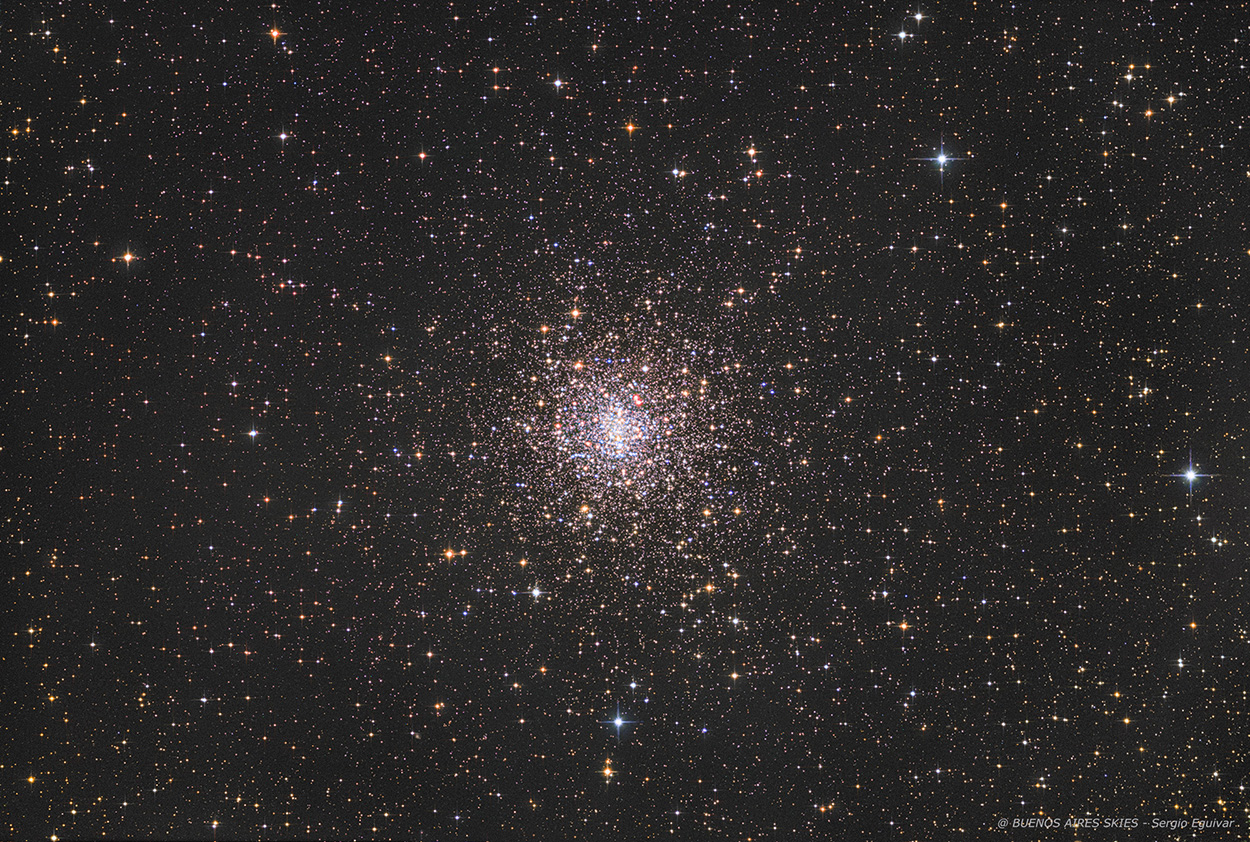
0222222222222222222222222222222222222222222222222222222.
| HOME |
MESSIER 4
GLOBULAR CLUSTER IN SCORPIUS
(Image centered at: ra 16 h: 23 m / dec -26º 32')
CLICK THE IMAGE FOR A HIGH RESOLUTION VIEW
June 2025, Home Backyard in Martinez, Buenos Aires, Argentina
DATA
TYPE: Globular Cluster
APPARENT DIMENSION: 26.3 arc minutes
APPARENT MAGNITUDE (V): 5.9
DISTANCE: 7,200 light years
IMAGE INFORMATION
INSTRUMENT: 6" ORION OPTICS UK (Ultra Grade Optics) w/Sky Watcher Coma Corrector (0.9x) working at at f4.5
CAMERA: QHY 183 MONO
MOUNT: VIXEN GDPX, OAG with Starlight Xpress Lodestar
FILTERS: OPTOLONG LRGB Set
SKY CONDITIONS: urban skies - Bortle 8
EXPOSURES: LRGB (45,45,45,45)
OBJECT DESCRIPTION AND IMAGE SESSION
Messier 4 (M4, NGC 6121) is one of the nearest globular clusters in the sky at an estimated distance of about 7,200 light years. Situated prominently about 1.3 degrees west of Antares, in constellation Scorpius, and being as bright as magnitude 5.6 visually, it can be detected by the naked eye under very dark skies, and is prominent with the slightest optical aid.
Globular cluster M4 was discovered by De Chéseaux in 1745-46 and listed by him as No. 19, and included in Lacaille's catalog as Lacaille I.9. Charles Messier cataloged it on May 8, 1764 and was the first to resolve it into a "cluster of very small [faint] stars;" this is the only globular cluster he could resolve with his moderate instruments, and thus the first globular cluster ever to be resolved. Only about 20 years later, William Herschel was able to resolve all Messier globulars with his large telescopes.
Messier 4 would be one of the most splendid globulars in the sky if it were not obscured by heavy clouds of dark interstellar matter. Interstellar absorption also reddens the color of the light from the cluster, and gives it a slightly orange or brown-ish appearance on color images. Its angular diameter, seen on deep photographs, is about 36 minutes of arc, more than that of the Full Moon; this corresponds to a linear diameter of about 75 light years. On typical photos it appears somewhat smaller at about 26', and visually it was estiamted at 14 arc minutes. Its tidal radius, determined by the distance where tidal gravitational forces of the Milky Way Galaxy would cause member stars to escape, is estimated at 32.49', or about 70 light-years, so that this globular gravitationally dominates a spherical volume 140 light-years in diameter.